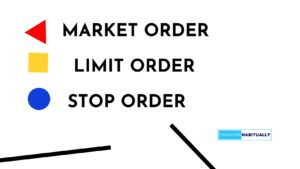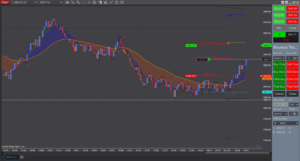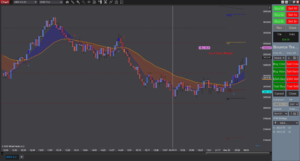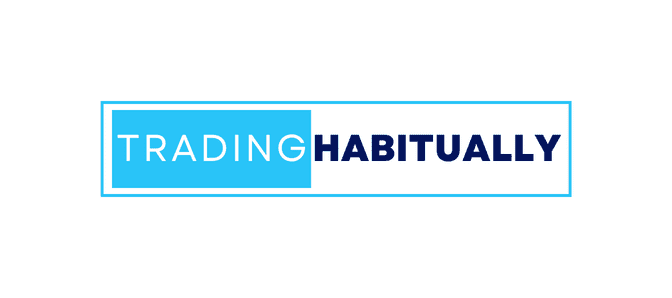
If you’re new to trading futures, you may have come across the different terms related to the type of orders and wondered what it means. Market orders, limit orders, and stop orders are three types of orders that can be placed when buying or selling futures contracts in the financial markets. In this section, we’ll take a closer look at explaining the difference between market order vs limit order vs stop order in financial markets. Here is a comparison of the main differences between the three:
What is a market order?
A market order is a type of order that is used to buy or sell a futures contract at the best available price. When you place a market order, you are telling your broker or trading platform to execute the trade as soon as possible, regardless of the current market price.
For example, let’s say you want to buy ES contract. If the current market price for ES is $3800, you might place a market order to buy at that price. Your broker or platform will then attempt to fill your order at the best available price, which could be $3800 or higher.
How do market orders work?
When you place a market order, your broker or platform will send the order to an exchange or marketplace, where it will be matched with a seller or buyer who is willing to trade at the current market price. Market orders are usually filled within a few milliseconds or seconds, depending on the liquidity of the security and the overall market conditions.

It’s important to note that market orders are not guaranteed to be filled at the exact price you expect. The market price of a futures contract can change quickly, and your order may be filled at a different price than you anticipated. This is known as “slippage,” and it can result in buying or selling at a higher or lower price than you intended.
When are market orders a good choice?
Market orders can be a good choice in certain situations. For example, you might use a market order if you need to execute a trade quickly and don’t want to wait for the market to reach a specific price. Market orders are also a good choice if you’re trading a highly liquid security and want to be sure your order will be filled.
On the other hand, market orders may not be the best choice if you’re trading a less liquid security or if you want to control the price at which your trade is executed. In these cases, you might consider using a limit order, which allows you to specify a maximum price you are willing to pay (if you are buying) or a minimum price you are willing to accept (if you are selling).
In Summary
- A market order is an order to buy or sell a futures contract at the best available price.
- Market orders are guaranteed to be filled, but the price at which they are filled may not be the same as the current market price.
- Market orders are generally executed more quickly than limit orders, as they do not require the market to reach a specific price.
- Market orders are generally more risky than limit orders, as you have no control over the price at which the order will be filled.
Limit orders:
What is a limit order?
A limit order is an order to buy or sell a futures contract at a specific price or better. When you place a limit order, you are telling your broker or trading platform to execute the trade only if the market price reaches the limit price you have specified.
For example, let’s say you want to buy ES futures contract. If the current market price for ES 3800, you might place a limit order to buy futures contract at 3795. Your broker or platform will then hold on to the order until the market price reaches $3795 or lower, at which point it will be filled. If the market price does not reach $3795, your order will not be filled.
How do limit orders work?
When you place a limit order, your broker or platform will send the order to an exchange or marketplace, where it will be added to the order book. The order book is a list of all the buy and sell orders that have been placed, organized by price. Limit orders that are placed at a higher price (for buy orders) or a lower price (for sell orders) will be added to the order book and held until the market price reaches the specified limit price.

It’s important to note that limit orders are not guaranteed to be filled. The market price of a security can change quickly, and it’s possible that the limit price you have specified may not be reached. In this case, your order will not be filled and you will need to place a new order or adjust your limit price if you still want to execute the trade.
What are the benefits of using limit orders?
Limit orders offer several benefits to traders. Here are a few examples:
- Price control: Limit orders allow you to specify the maximum price you are willing to pay for a futures contract (if you are buying) or the minimum price you are willing to accept for a futures contract (if you are selling). This can help you minimize the risk of buying or selling at an unfavorable price.
- Order execution: Limit orders are not guaranteed to be filled, but they can be a good choice if you want to wait for the market to reach a specific price before executing a trade. This can be especially useful if you are trading a less liquid security and don’t want to take the risk of a market order being filled at an unexpected price.
- Risk management: Limit orders can be used as part of a risk management strategy. For example, you might use a sell limit order to protect against potential losses in a trade by specifying a minimum price at which you are willing to sell.
- A limit order is an order to buy or sell a futures contract at a specific price or better.
- Limit orders allow you to set the maximum price you are willing to pay for a futures contract (if you are buying) or the minimum price you are willing to accept for a futures contact(if you are selling).
- Limit orders are not guaranteed to be filled. If the market does not reach the specified limit price, the order will not be executed.
- Limit orders can be used to minimize the risk of buying or selling at an unfavorable price.
Stop orders:
What is a stop order?
A stop order is an order to buy or sell a futures contract when the market price reaches a specified price, known as the stop price. When you place a stop order, you are telling your broker or trading platform to watch the market price of the futures contract and execute the trade when the stop price is reached.
For example, let’s say you have bought ES contract at 3800 price and want to protect against potential losses. You might place a sell stop order with a stop price of $3750. If the market price of ES futures contract falls to $3750 or lower, your sell stop order will be triggered and the futures contract will be sold at the best available price.
How do stop orders work?
Stop orders are usually placed as part of a risk management strategy. When you place a stop order, your broker or platform will add it to the order book and watch the market price of the future contract. If the market price reaches the stop price, the stop order becomes a market order and is filled at the best available price.
It’s important to note that stop orders are not guaranteed to be filled at the exact stop price you have specified. The market price of a futures contract can change quickly, and it’s possible that the stop price may not be reached. In this case, your order will not be filled and you will need to place a new order or adjust your stop price if you still want to execute the trade.
How can stop orders be used to manage risk?
Stop orders can be a useful tool for managing risk in trading. Here are a few examples of how stop orders can be used:
- Protect against potential losses: You can use a sell stop order to protect against potential losses in a trade by specifying a minimum price at which you are willing to sell.
- Lock in profits: You can use a buy stop order to lock in profits in a trade by specifying a maximum price at which you are willing to buy.
- Trailing stop: You can use a trailing stop order to adjust the stop price of a trade as the market price of the futures contract moves in your favor. For example, if you have bought ES contracts at 3800 and the price rises to 3850, you can activate trailing stop, where your stop order can be moved in predefined steps.
In Summary
- A stop order, also known as a stop-loss order, is an order to buy or sell a futures contract when the market price reaches a specified price, known as the stop price.
- Stop orders are typically used to protect against potential losses in a trade. For example, a stop-loss order can be placed to sell a futures contract if it falls below a certain price.
- Stop orders become market orders when the stop price is reached, meaning that they are guaranteed to be filled at the best available price.
- Stop orders can be used to manage risk, but they may not always be filled at the desired stop price due to market conditions.
When deciding which type of order to use, it’s important to consider your trading goals and risk tolerance. Market orders are best for executing trades quickly, but may result in buying or selling at an unfavorable price. Limit orders allow you to specify a specific price, but may not be filled if the market does not reach that price. Stop orders can be used to manage risk, but may not always be filled at the desired stop price.
Learn to scalp futures market with Bounce Method here.
Author: Boris Tkachev
trader

